Product
Firmness
Score
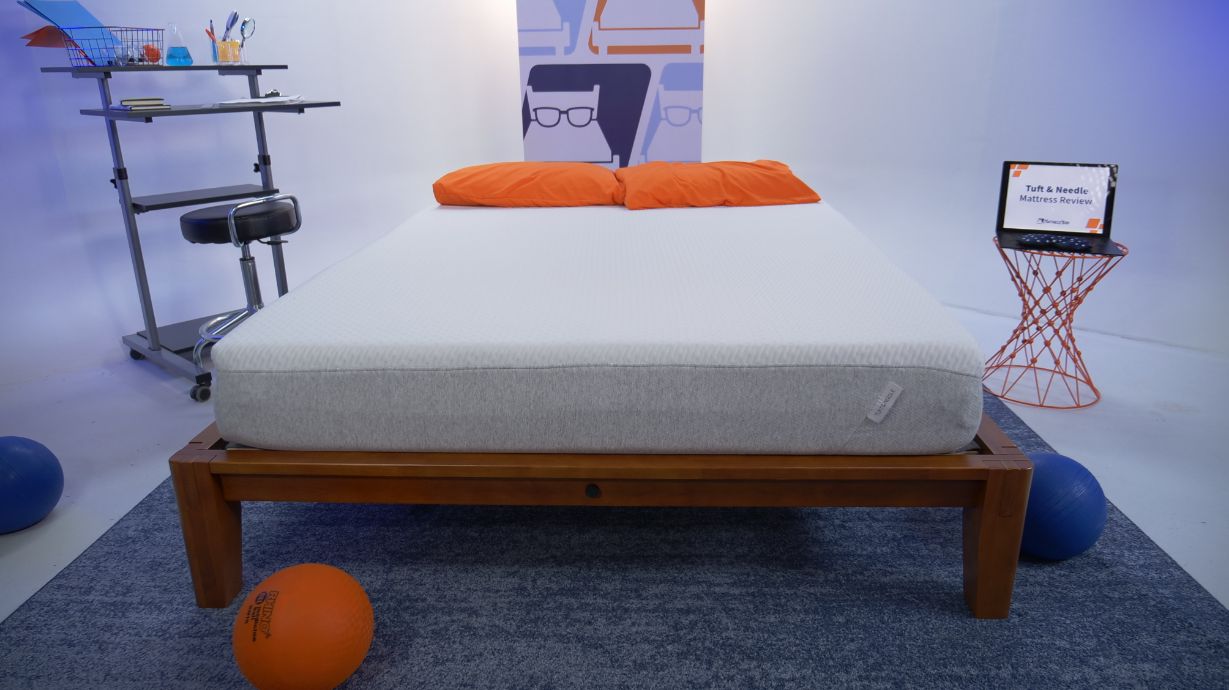
Disclosure: By clicking on the product links in this article, Mattress Nerd may receive a commission fee at no cost to you, the reader. Read full disclosure statement.
Which bed is the best for you? You can’t be sure about this until you read this article. We’ll guide you in this comparison of Lull vs. Tuft & Needle and describe their differences, pros and cons, and pricing. Check out what others have to say in our testing methodology for more information.
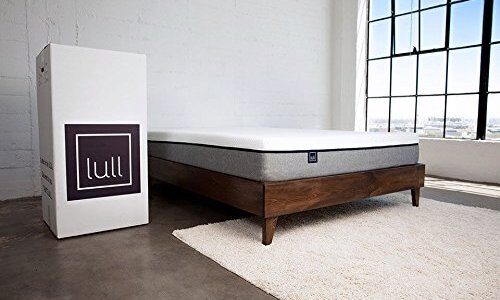

The Tuft & Needle Original mattress is a medium-firm bed with a breathable foam construction. The Lull has a similar firmness, but with conforming memory foam along the top layer.
| Lull is best for… | Tuft & Needle is best for… |
| Light sleepers who share the bed | Couples |
| Memory foam lovers | Hot sleepers |
| Indecisive shoppers | Shoppers looking for a deal |

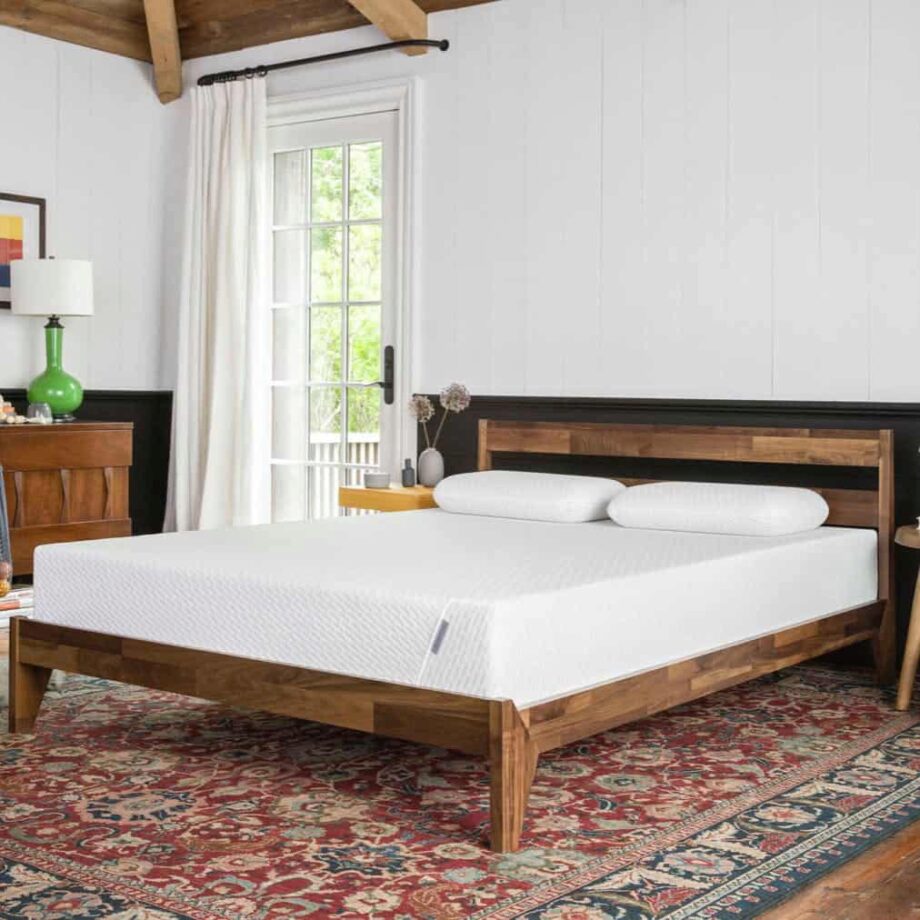
Mattress firmness and feel is a huge factor in choosing the right bed for you. Lull and Tuft & Needle have differences, and I’ll help you understand more about it in this section.
When light sleepers lie down on the Lull Mattress, they won’t easily sink because of the pressure-relieving memory foam. Meanwhile, the Tuft & Needle mattress is a bit softer compared to the Lull but it also has the ability to limit motion transfer–making them both ideal mattresses for those looking for medium-firm beds. Both the Lull and Tuft & Needle mattresses provide both cushion and support for a balanced sleeping experience. While these mattresses have a similar firmness, there are important distinctions between how they feel and for whom they work best.
The Lull mattress will be enjoyed by back sleepers thanks to the memory foam that hugs your body. On the other hand, the Tuft & Needle Adaptive Foam has a softer feel which means more give at a sleeper’s pressure points. This leads us to recommend it over the Lull for side sleepers. Lying down on both beds should leave you feeling supported and lightly contoured at the same time.
The Lull mattress begins with a layer of contouring memory foam along the top of the bed. This memory foam slowly molds to your body’s curves, evenly distributing weight for a healthy spinal posture and some nice pressure relief. The second foam layer is firmer, quickly counteracting any excess sink, so you don’t feel “stuck” in the memory foam. A final high-density foam base brings stability and provides further motion isolation.
The Tuft & Needle is an all-foam mattress with a balanced feel. In other words, you’ll feel neither like you’re sleeping “on” or “in” the surface. The top layer of medium-firm foam quickly adjusts to pressure, so you won’t experience the “quicksand” memory foam feel. Also, thanks to cooling gel beads and graphite in the upper foam layer, the Tuft & Needle sleeps mostly cool.
Lull Performance By Body Type & Sleeping Position:
| Body Type: | BACK SLEEPERS | STOMACH SLEEPERS | SIDE SLEEPERS |
| Lightweight (< 130 lbs): | 5 | 3 | 3 |
| Average-weight (130–230 lbs): | 5 | 3 | 4 |
| Heavyweight (> 230 lbs): | 3 | 2 | 4 |
Tuft & Needle Performance By Body Type & Sleeping Position:
| Body Type: | BACK SLEEPERS | STOMACH SLEEPERS | SIDE SLEEPERS |
| Lightweight (< 130 lbs): | 4 | 4 | 2 |
| Average-weight (130–230 lbs): | 4 | 3 | 4 |
| Heavyweight (> 230 lbs): | 3 | 2 | 2 |
Average weight side sleepers will prefer the Tuft & Needle over the Lull since it better supports the sleeper’s pressure points. However, back sleepers will feel wonderful on both the Lull and Tuft & Needle mattresses with the help of its foam support system.
The Lull and Tuft & Needle mattresses do not provide enough support for heavyweight backs sleepers. If you fall into this body type category, we recommend a high-quality hybrid or innerspring mattress.
Lightweight back sleepers (< 130 lbs) will likely do best on the Tuft & Needle thanks to a soft top layer that gives more easily. While both the Lull and Tuft & Needle mattresses are suitable for lightweight stomach sleepers.
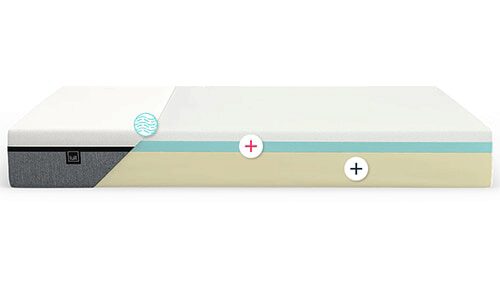
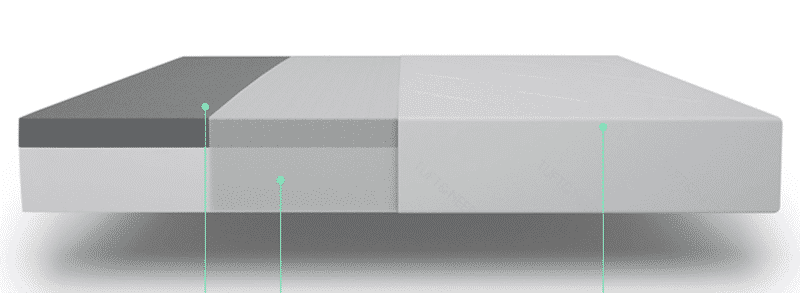
The Lull and Tuft & Needle mattresses are both made of foam. But they have distinct differences, I’ll discuss them in this section.
| Lull Mattress Materials | Tuft & Needle Mattress Materials |
| Breathable Mattress Cover | Soft-Knit Fabric Cover |
| Gel Memory Foam (“1.5”) | Tuft & Needle Adaptive Foam (“3”) |
| High-Resilience Foam (“1.5”) | High-Density Support Foam (7”) |
| Durable Base Layer (“7”) |
The Lull mattress uses a breathable mattress cover while the Tuft & Needle mattress uses a soft-knit fabric cover that allows you to sink deeply into the top layer of the Adaptive foam.
Lull’s comfort layer is a gel memory foam that is optimized for minimal motion transfer. Tuft & Needle Adaptive foam springs for bounce-back support, making it a softer cushion compared to the Lull.
The support layer of the Lull mattress ensures full muscle rest and rejuvenation. Similarly, the Tuft & Needle support layer is dependable in its motion transfer.
| Size | Lull Prices | Tuft & Needle Prices |
| Twin | $755.00 | $645.00 |
| Twin XL | $799.00 | $695.00 |
| Full | $1099.00 | $795.00 |
| Queen | $1199.00 | $895.00 |
| King | $1699.00 | $1295.00 |
| California King | $1699.00 | $1295.00 |
For exclusive discounts on both beds see our Lull mattress coupons and Tuft & Needle mattress coupons.
The Lull Mattress works as a universal, memory foam mattress that can accommodate the average sleeper. With its 3 layers of foam, the Lull provides noteworthy pressure relief and motion isolation, making this a great mattress for couples. The Lull’s medium firm feel appeals to back sleepers by keeping the spine aligned while still remaining durable. At just over $1000 for a Queen size, the Lull Mattress makes an attractive match for anyone looking for a quality but affordable memory foam mattress. For similar options, see the best mattresses under $1,000.
The original Tuft & Needle is an all-foam mattress for those who want an entry level bed with broad appeal. The Tuft & Needle is budget-friendly and has a medium-firm feel that balances cushioning and support. It’s best for back and side sleepers under 230 lbs.
Both the Tuft & Needle and the Lull have cooling features along the top layer that mitigate body heat retention to some degree. But the Tuft & Needle proprietary open-cell foam design means greater airflow when compared to the Lull’s memory foam surface. The added breathability makes the Tuft & Needle mattress more suitable than the Lull for hot sleepers–although neither sleeps as cool as the typical innerspring or hybrid mattress.
Because the Lull and Tuft & Needle original mattresses have all foam layers, they each provide excellent motion transfer. This means that you or your partner can move around without disturbing one another.
If limiting movement is your top concern, the Lull may be your best bet. Memory foam layers, like the one found in the Lull, are the best mattress material for isolating motion. While polyfoam, which makes up each layer of the Tuft & Needle, is very good at absorbing movement, it’s not quite to the level of memory foam.
The Lull’s edges are studier than those of the Tuft & Needle. The memory foam along the top grips the body well, so you won’t feel unstable whether lying or sitting along the edge. The Tuft & Needle edges are pretty soft and tend to cave in a bit under pressure.
While most people won’t notice much of a difference, couples who share smaller beds and people who like to sit along the edges should look for a bed with excellent edge support. Strong edges mean you can spread out or use your mattress for seating.
Pressure relief is particularly important for side sleepers and those with joint pain. The Tuft & Needle is a touch softer than the Lull, though both performed well during our pressure relief test. The Lull offers some cushioning comfort, but the firm base layer prevents you from sinking very deep into the top comfort layer.
The best mattresses for stomach sleepers and those with back pain maintain proper spinal alignment. That means your hips stay elevated with your shoulders. If you’re a side sleeper, it looks like your spine is in a straight line from neck to tailbone.
Achieving a good sleeping posture depends on your sleeping position and body weight. Both beds are suitable for lightweight stomach sleepers and lightweight or average-weight back sleepers. The Tuft & Needle is better for average-weight side sleepers. Neither mattress is ideal for those weighing over 230 lbs—heavyweight sleepers need more support to avoid back pain.
The Lull and Tuft & Needle will provide you restful sleep and will last five to seven years. The Lull may better resist the gradual softening that happens with foams because it has a firmer transition layer, while the Tuft & Needle one thick comfort layer may soften slightly faster.
Lull customers in the contiguous U.S. get free shipping, and all customers have a full year to test drive their new mattress. Just like Tuft & Needle, Lull has no mandatory break-in period, so you can return your mattress at any time during the sleep trial. Simply contact Lull, and you’ll receive a full refund within a few business days of the mattress being picked up.
If you keep the mattress, Lull covers defects for as long as you own the bed–we call that a Lifetime warranty. The only downside to such a generous warranty period is that body impressions aren’t covered until they exceed 1.5”. Chances are you’ll opt for a new mattress closer to 1”. Also keep in mind that off-gassing isn’t covered by the warranty, but rest assured that Lull mattresses are CertiPUR-US certified for no toxic emissions.
The Tuft & Needle mattress offers free shipping within the continental U.S., though there is a shipping fee for customers living in Alaska or Hawaii.
You have a 100-night trial period to decide if the mattress works for you. If you find that it’s not quite what you wanted, Tuft & Needle will refund the bed during the trial period. Unlike most bed-in-a-box mattress companies, Tuft & Needle doesn’t have a required 30-day break-in period before requesting a return, although we still recommend giving your mattress a few weeks to let your body adjust before making a final decision.
The Tuft & Needle 10-year warranty enables you to receive a replacement mattress if yours develops material or craftsmanship defects. What impresses us is that the warranty covers body indentations along the sleeping surface at just 0.75”, compared to the standard 1.”
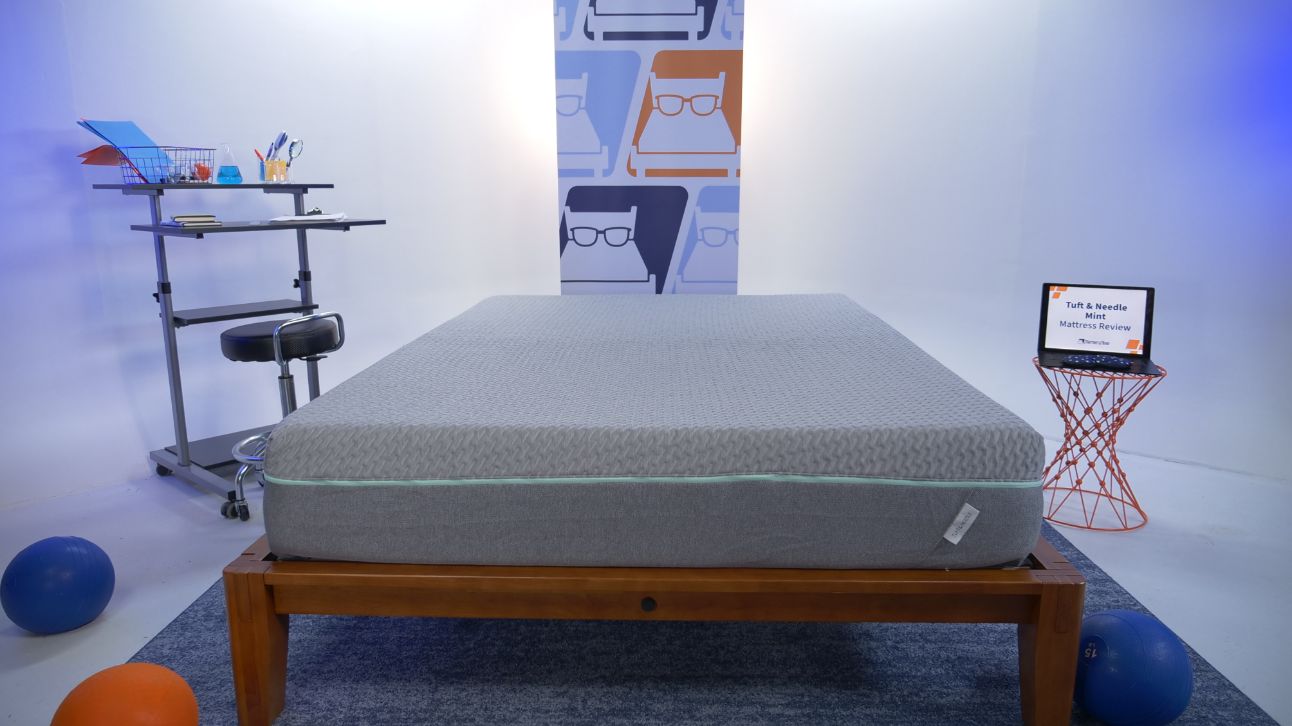
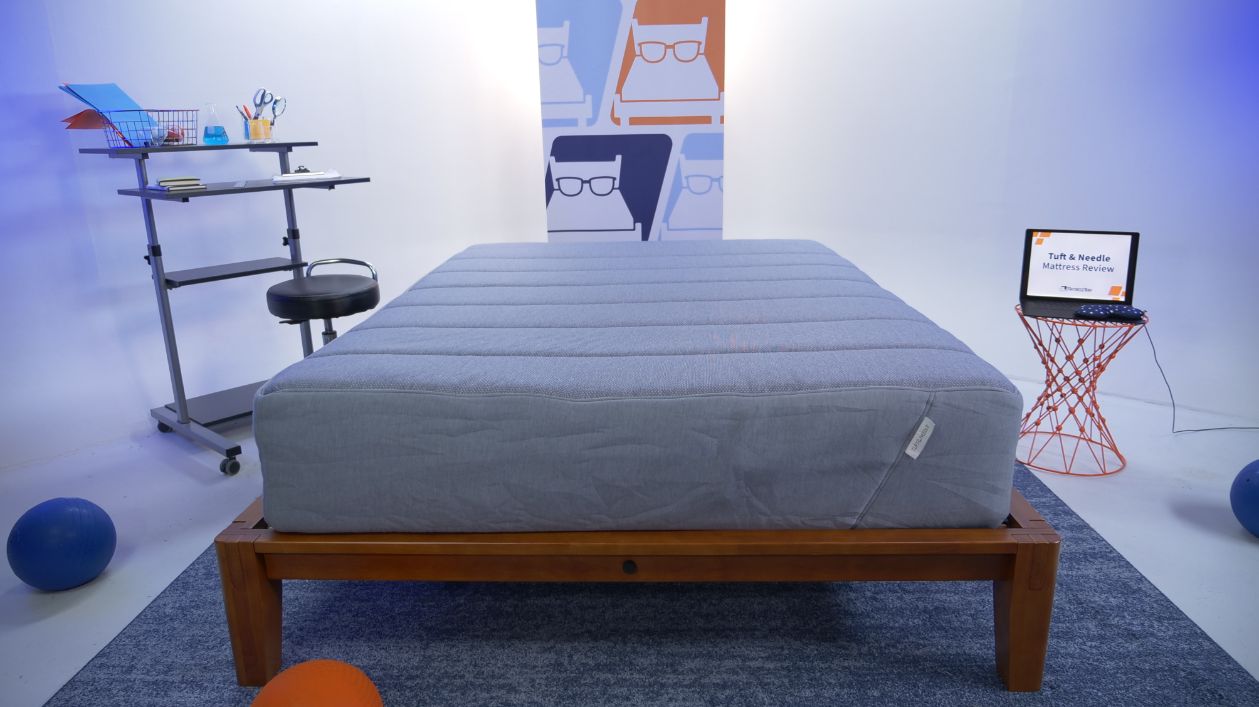
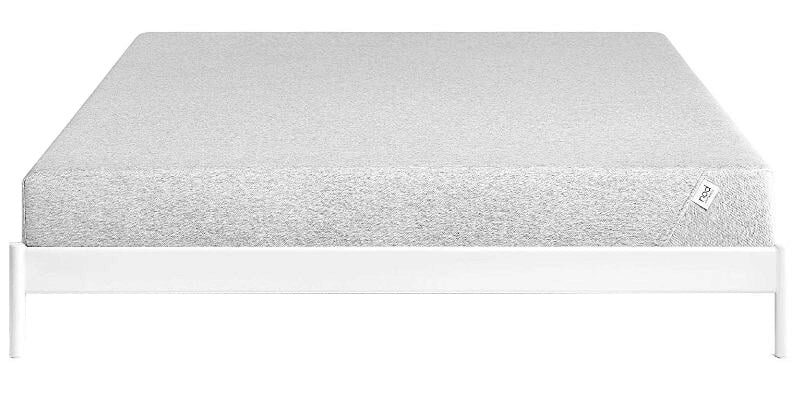
The Tuft & Needle is the most affordable mattress in this comparison. It’s also slightly cooler and a bit easier to move around on. The Lull’s memory foam layer offers better contouring and motion isolation for couples, but the softer feel of the T&N provides better pressure relief. Both have risk-free trial periods with free returns, but Lull’s sleep trial is more generous than Tuft & Needle’s.
Lull mattresses are durable and can last a long time. It greatly depends on how often the owner uses and maintains the mattress, as well as the size and weight of its owner. But in general, Lull mattresses should last you five to seven years.
No, Lull mattresses are not meant to be rotated. Since the top layer is designed with a memory foam, rotating the Lull to its bottom layer would feel rather uncomfortable. When concerned about wear, we recommend rotating your mattress 180 degrees about every six months.
Similar to the Lull mattress, we do not advise Tuft & Needle mattresses to be rotated. The mattress materials are made up of cozy layers intended to adapt and support your body, so rotating it will severely affect your quality of sleep and level of comfort.